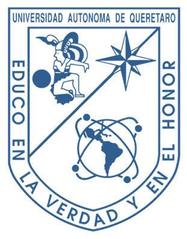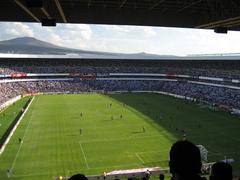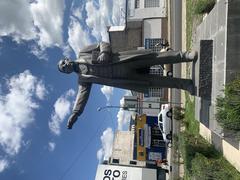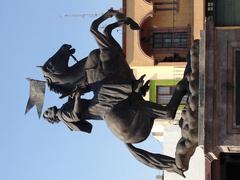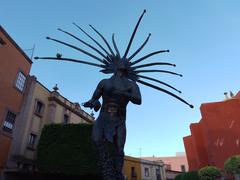Museo De Bichos Querétaro: Visiting Hours, Tickets, and Complete Travel Guide
Date: 14/06/2025
Introduction: A Unique Window into Entomology in Querétaro
Nestled in the heart of Santiago de Querétaro, the Museo De Bichos Querétaro offers an immersive journey into the world of insects and arthropods. Distinct from the city’s traditional focus on colonial history and art, this museum champions biodiversity conservation and environmental education—addressing critical global concerns about declining insect populations and their crucial ecological roles. Through interactive exhibits, live specimens, and expert-led tours, the museum sparks curiosity and respect for these often-misunderstood creatures, becoming a resource for families, students, and travelers alike.
With its extensive collection—over 3,000 specimens including both native and exotic species—the museum draws visitors who wish to explore the intricate beauty and ecological significance of insects. Its central location in Querétaro’s historic downtown ensures easy access and the possibility to combine your visit with nearby cultural landmarks such as Alameda Hidalgo Park and the Aqueduct of Querétaro.
Admission is affordable and the museum’s accessible facilities make it a welcoming destination for all. Its commitment to environmental awareness is evident through workshops, school programs, and community outreach. Whether you are a budding entomologist, a parent seeking educational outings, or a tourist diversifying your cultural itinerary, a visit to Museo De Bichos Querétaro promises scientific rigor mingled with interactive fun. For up-to-date visitor information, consult the official resources and trusted guides: SIC Cultura, ExploraMuseos, and Daniel Orrante’s review.
Contents
- Introduction
- Museum History & Cultural Significance
- Exhibits & Collections
- Visitor Information
- Educational Impact & Community Engagement
- Accessibility & Nearby Attractions
- Frequently Asked Questions (FAQ)
- Conclusion
- Sources
1. Museum History & Cultural Significance
Origins and Environmental Education
Museo De Bichos Querétaro emerged as a pioneering response to the need for environmental learning in the region. While Querétaro is celebrated for its colonial heritage, this museum diversifies the city’s cultural offering by highlighting biodiversity and the essential roles insects play both locally and globally. Founded as an interactive and didactic space, the museum’s mission is twofold: to inspire curiosity and respect for insects and to raise awareness on biodiversity conservation—an increasingly urgent issue in the face of global species decline.
Role in Biodiversity Conservation
The museum’s exhibits and outreach underscore insects’ roles as pollinators, pest controllers, and decomposers, essential for ecological balance. Through hands-on educational activities and community programs, Museo De Bichos Querétaro aims to transform negative perceptions and foster appreciation for these indispensable creatures.
2. Exhibits & Collections
Permanent Collection Overview
Boasting over 3,000 specimens, the museum’s collection is among Mexico’s most extensive, curated over decades by entomologist Jesús Puente (ExploraMuseos; Culture Straveled). Exhibits highlight geographic and taxonomic diversity, including:
- Butterflies and Moths: With especially vibrant displays of South American and Malagasy species (Atlas Obscura).
- Beetles: Ranging from massive rhinoceros beetles to jewel-toned scarabs.
- Praying Mantises, Stick and Leaf Insects: Showcasing camouflage and evolutionary adaptation.
- Arachnids: Both preserved and live tarantulas, scorpions, and spiders.
Interactive Elements
- Glass Display Cases: Specimens are carefully labeled and arranged for close observation, with child-friendly heights (Museumspedia).
- Microscopy Stations: Visitors can examine insect anatomy in detail.
- Live Insect Displays: Including tarantulas and Madagascar hissing cockroaches, with opportunities for supervised handling (Azteca Querétaro).
Thematic & Rotating Exhibits
Sections are dedicated to local biodiversity and conservation, as well as rare and exotic insects from other continents. Occasional seasonal or thematic exhibits—such as monarch butterfly migration—keep the experience dynamic (Diario de Querétaro).
Guided Tours
A highlight is the guided experience led by Jesús Puente, whose expertise and passion bring the exhibits to life for visitors of all ages (ExploraMuseos). Tours are adapted for children, families, or adults, making the museum experience accessible, engaging, and memorable.
3. Visitor Information
Location & Accessibility
- Address: Avenida Luis Pasteur Sur 32, Centro, Santiago de Querétaro, Querétaro, Mexico (SIC Cultura)
- Entrance: Through a craft beer bar, creating a relaxed and informal visitor atmosphere (danielorrante.com.mx).
- Getting There: Easily accessible via public transit (bus lines C-50, RUTA-40, RUTA-44, T-01, etc.; nearest stop Zaragoza Y Luis Pasteur—Moovit). Street parking and public lots are available nearby.
- Accessibility: Street-level entrance; accessible buses; some tight areas, but assistance available.
Visiting Hours & Tickets
- Tuesday–Friday: 11:00 AM–2:00 PM & 3:00 PM–6:00 PM
- Saturday–Sunday: 11:00 AM–8:00 PM
- Closed Mondays
- Admission: $50 MXN (discounts for children/students; free for children under 3; fees may apply for interactive experiences)
Amenities & Nearby Attractions
- Dining: Numerous cafes and restaurants within walking distance.
- Attractions: Alameda Hidalgo park, Aqueduct of Querétaro, historic city center landmarks.
- Facilities: Restrooms, family-friendly spaces, and occasional workshops/events.
4. Educational Impact & Community Engagement
School Programs & Workshops
The museum is a vital educational resource for local schools, offering curriculum-aligned tours on insect anatomy, pollination, decomposition, and conservation. Interactive learning encourages children to ask questions, handle live specimens under supervision, and engage with science in an accessible way (danielorrante.com.mx).
Conservation Awareness
Through interpretive signage, multimedia, and direct interaction, the museum highlights the threats insects face and promotes responsible environmental practices. It fosters science citizenship and inspires visitors to protect local biodiversity.
Community Outreach
The museum collaborates with environmental organizations and local authorities, expanding its impact beyond its walls to promote biodiversity conservation and science literacy throughout Querétaro.
5. Accessibility & Nearby Attractions
- Public Transit: Frequent buses from early morning to late evening (Moovit).
- Bicycle & Pedestrian Access: Located in a pedestrian-friendly, central area with cycling infrastructure.
- Nearby Sights: Combine your visit with other cultural and historical sites such as Plaza de Armas, Templo de San Francisco, and Museo Regional de Querétaro.
6. Frequently Asked Questions (FAQ)
What are Museo De Bichos Querétaro’s visiting hours?
Tuesday–Friday: 11:00–14:00 & 15:00–18:00; Saturday–Sunday: 11:00–20:00; closed Monday.
Where is the museum located?
Avenida Luis Pasteur Sur 32, Centro, Santiago de Querétaro, Querétaro.
How much does admission cost?
$50 MXN general admission; discounts for children and students; children under 3 free.
Is the museum suitable for children and school groups?
Yes, with interactive and educational exhibits designed for all ages. School programs are available.
Are guided tours and hands-on encounters available?
Yes. Guided tours, often led by founder Jesús Puente, and supervised live specimen encounters are highlights.
Is the museum accessible for people with limited mobility?
Most areas are accessible; for specific needs, contact the museum directly.
Is photography allowed?
Personal photography is generally permitted, but flash and tripods may be restricted.
Can I handle live insects?
Yes, under staff supervision, you can interact with select live specimens.
7. Conclusion
Museo De Bichos Querétaro stands out as a pioneering institution in Mexico for environmental education and public engagement with the natural world. Through its extensive collections, interactive displays, and unique visitor experience—including entry through a craft beer bar—it offers an accessible and memorable journey into entomology. Its central location invites visitors to integrate their experience with other historical and cultural attractions in Querétaro’s UNESCO World Heritage city center.
Ideal for families, educators, tourists, and locals, the museum breaks down barriers and dispels fears about insects, fostering curiosity and environmental stewardship. For up-to-date information on visiting hours, tickets, and special programs, download the Audiala app or consult the museum’s official channels.
Sources and Further Reading
- SIC Cultura
- Moovit
- ExploraMuseos
- Daniel Orrante
- Azteca Querétaro
- Culture Straveled
- Atlas Obscura
- Museumspedia
- Diario de Querétaro
- Mexico Travel Secrets
- Querétaro Tourism Official Site
